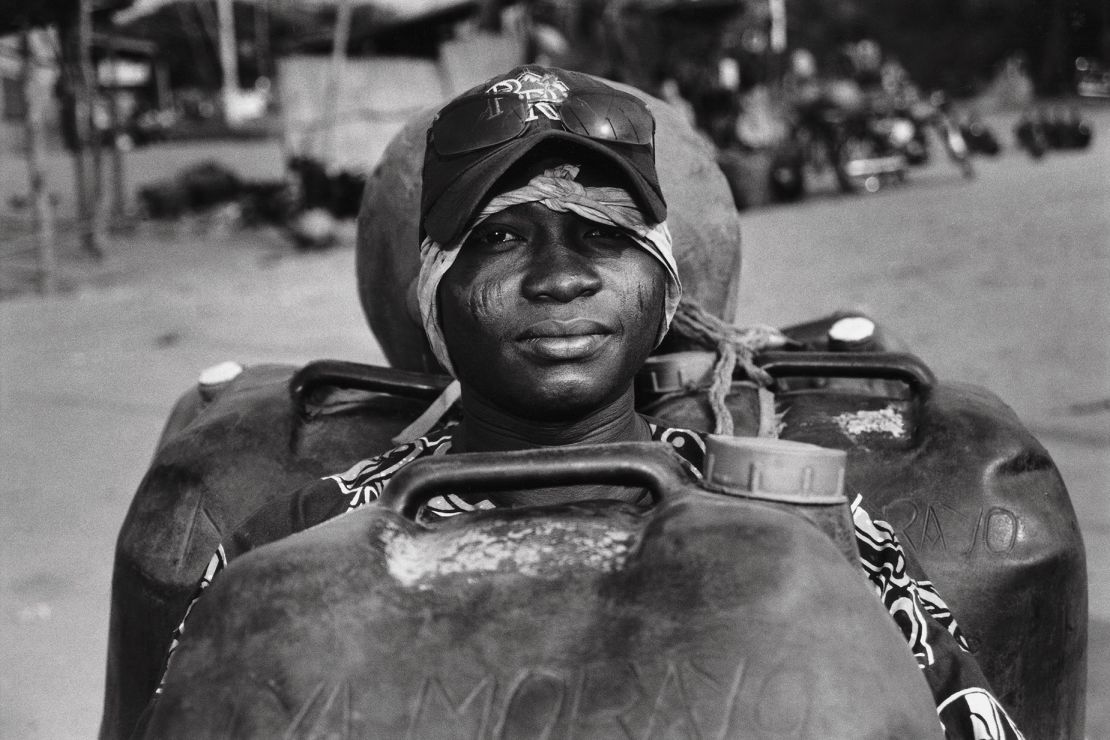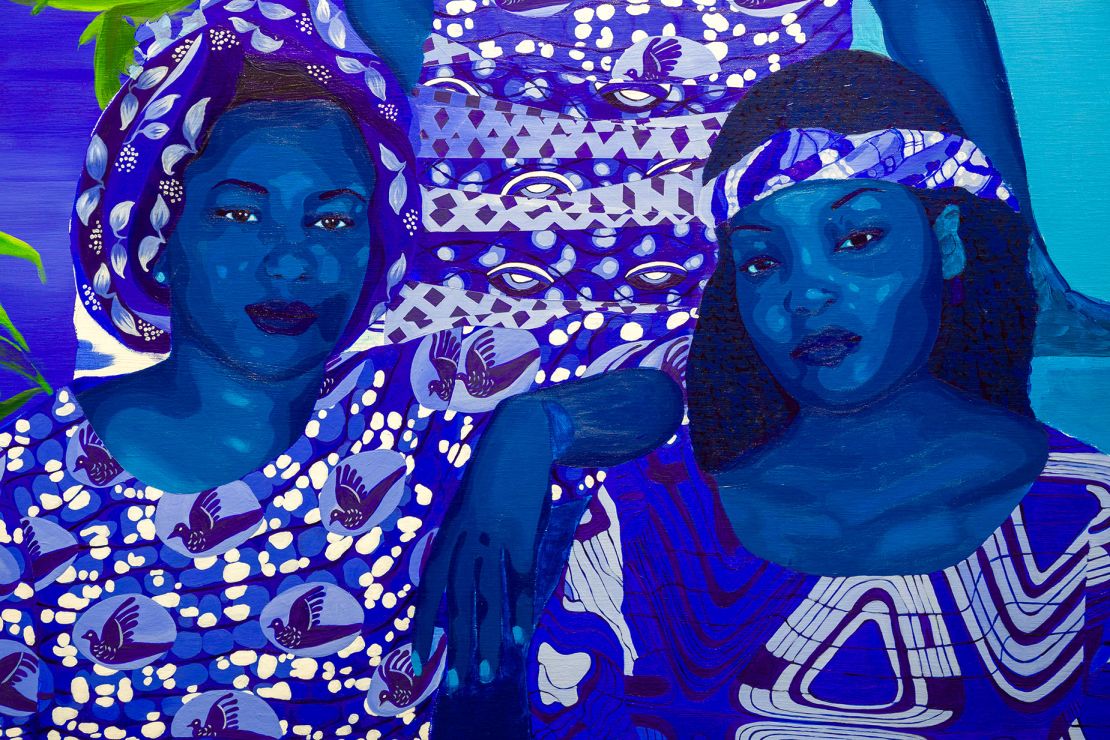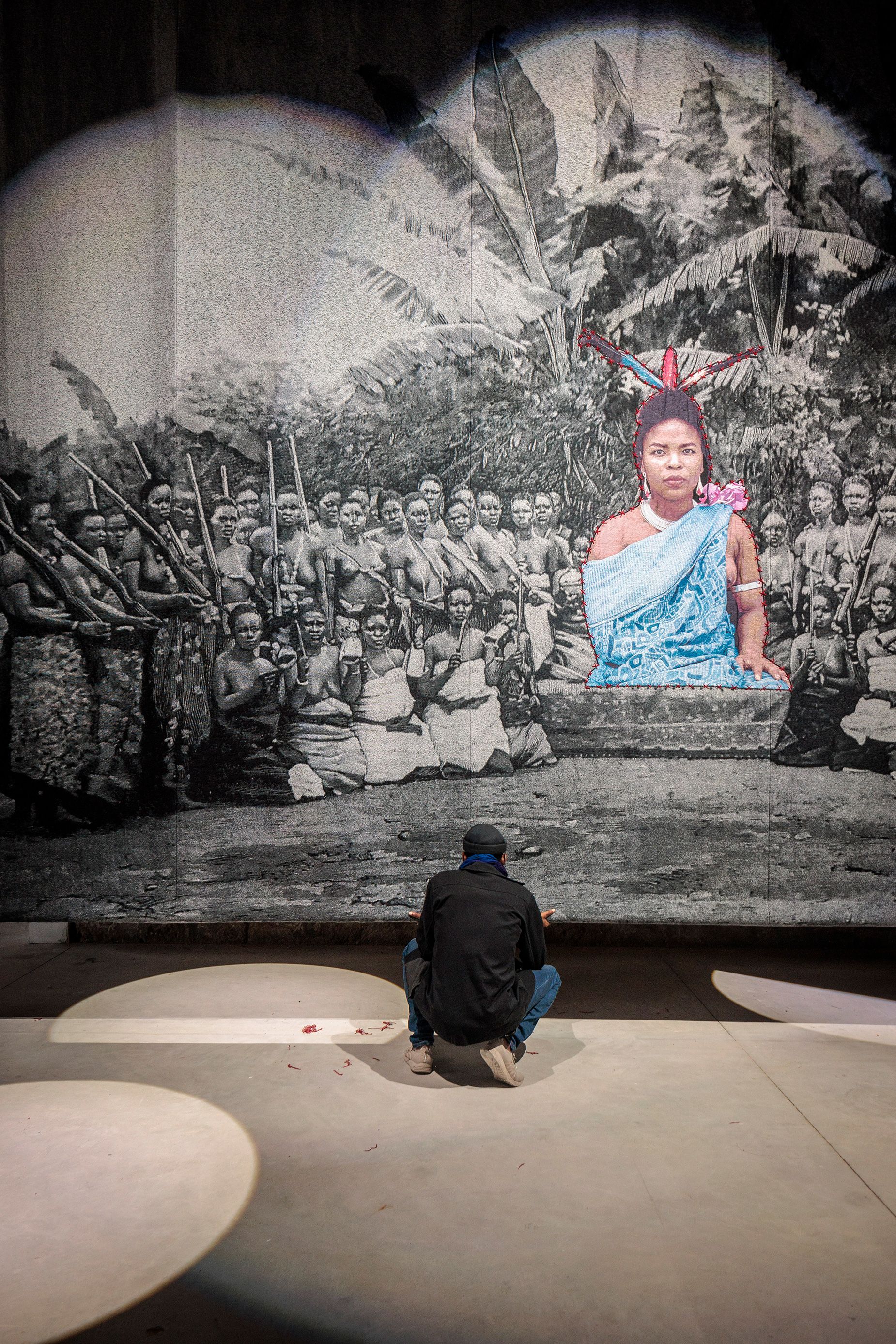Ancestral African art is a linchpin of identity and a source of inspiration to creatives across the continent. But an estimated 90% % of cultural artifacts still remain outside of Africa, according to a report on the restitution of sub-Saharan African heritage commissioned by French President Emmanuel Macron in 2018.
In 2021, 26 artifacts stolen by French colonizers were returned to the West African country of Benin. That same year, the Smithsonian Museum of African Art in the US announced plans to repatriate its Benin bronzes, while two more statues were returned to Nigeria (formerly part of the Kingdom of Benin) in 2022.
Now, a contemporary take on Beninese art is on display on its own terms. For the first time in the 60-year history of the renowned Venice Biennale in Italy – an arts and culture festival lasting eight months, hosted every other year – Benin is presenting a national pavilion.
Called “Everything Precious is Fragile,” the exhibition will explore the theme of African feminism and features four critically acclaimed contemporary artists: Romuald Hazoumé, Chloé Quenum, Ishola Akpo, and Moufouli Bello.
Their works will focus on topics including gender, slavery, decolonization, repatriation, and spirituality.
“In my work, memory is very important,” 61-year-old Romuald Hazoumé told CNN in a video interview ahead of the Biennale’s opening. “(Benin) always thought about other people’s cultures without thinking about our own. The day we forget we’ll be lost, and we’ll soon be erased from the minds of future generations.”

Reclaiming the past
For Nigerian Azu Nwagbogu, the director of the African Artist Foundation in charge of curating the Benin National Pavilion, Hazoumé’s experience is a significant contribution to the exhibition, both for his ability to interpret the theme and for serving as a mentor for younger talent.
“Art is really about transferring knowledge and that’s super important for my proposition for the Biennale,” Nwagbogu said. “I think the way he deploys the materiality of found objects allows you to think about the object that he’s trying to make.”

Each of the artists brings a unique perspective and different medium to underscore the link between contemporary art and the traditions ingrained in Benin’s pre-colonial past.
Hazoumé’s Yoruba lineage, for example, comes from high priests of the Fâ of Nigeria, also known as Babalawo. Leaning into his heritage, he produced critically acclaimed installations using petrol containers and other discarded materials.
Hazoumé grew up Catholic but taps into ancestral African traditions like voodoo to create his signature masks inspired by Gèlèdé, a Yoruba feminist ideology that asserts the importance of women’s leadership in Beninese culture.
By using recycled materials his art speaks about current socio-political issues with an emphasis on reflecting on the consequences of colonization, migration, and African identity.
Hazoumé hopes the exhibition will reiterate his message and inspire other African artists to own their past to fuel creativity.
“What I want to (say) bothers me. I don’t have a choice. I’m disturbed by what I want to do.” he said. “What I want people to take away from my work is that people have to know that they come from somewhere, that they have strong traditions, they have a strong culture, they have to dive back into it before they know where they’re going.”
Forging the present

It is a theme echoed by his three fellow artists. Chloé Quenum, who studied anthropology in France, casts metal, glass, and concrete to emphasize through a historical lens the political issues that deal with mixed-race and female visibility.
Ishola Akpo explores the opportunities of digital technology by mixing modern techniques with black and white photography to meld reality and fiction through thoughtful and provocative imagery.

And the youngest of the group, Moufouli Bello, uses traditional large-format paintings to highlight female inequality and injustice. The lawyer-turned visual artist made a splash in the global art scene with indigo-tinted portraits, showcasing the iconic Yoruba patterns found on women’s clothing and designs of blue dyed fabric.
“I’ve found that art can be used as a tool to denounce things, to educate, because (it) doesn’t involve direct confrontation and allows the artist to express herself without putting her person first,” she told CNN.
Curating the future
Benin’s inclusion in the world’s longest-running biennale comes after an influx of African nations to the exhibition in recent years, with Madagascar and Ghana debuting in 2019 and Uganda, Cameroon, and Namibia’s first national pavilions featuring in the last edition in 2022.
According to the curatorial team, the overarching aim of this exhibition is to not only elevate feminism but create a “universal humanism” of African women by challenging stereotypes.

Their aim is to make the Biennale an enclave of experiential encounters, focusing on the conception of art in a public space through sound, smell, and sight.
“Each artist brings a different ingredient to give the audience something relevant to the contemporary moment we are living in,” curator Nwagbogu added.
During Hazoumé’s long 40-year career, even while he found international success, he struggled to get visibility in his own country. But he says with renewed interest in African culture worldwide he decided to participate in the Benin Pavilion.
“For several years, I never took part in a Beninese exhibition for personal reasons, because I don’t want to take anyone’s place, but things have changed,” Hazoumé said. “When I was (selected as) one of the four artists and when I was told the theme, I said ‘Wow!’ Today, I’m able to be proud of my country.’”
The Venice Biennale opened April 20 and will run through November 24, 2024.














